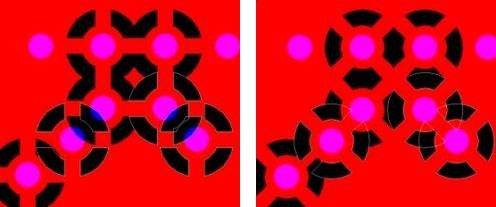How Eurocircuits handles your PCB design data and why
Stage 3: panelization
Different designs from different customers must be combined into one large panel. Doing this properly is important for the pooler as it partly determines the cost of production. Besides costs, there are some details that do affect board quality so you may want to know about them.Orders with similar classifications and delivery terms are grouped. Then drilling is optimized by “resampling” hole sizes larger than 1 mm to a resolution of 0.1 mm instead of 0.05 mm. This reduces the number of tool changes and speeds up production. The shortest drill and routing paths are also calculated, again to speed up production.

The plating is simulated, and the total copper area is calculated and adjusted by placing galvanic compensation patterns (“robber/thieving bars”) to the open panel areas to obtain a uniform galvanization.
Conclusion
PCB pooling is more than simply plunking a bunch of Gerber files on a panel. Many checks and additional steps are needed to ensure a consistent and high-quality result for all the clients. In many cases your PCB design data is not used exactly as you provided it. Understanding what may be changed and why will help you make your boards easier to manufacture.Integrating the design rules check (DRC) provided by Eurocircuits into your CAD package will avoid unnecessary problems and questions, making the production of your board smoother. Use the Eurocircuits PCB Visualizer to verify that you did everything right.

Even though the engineers at Eurocircuits know their business very well, you may not want them to interfere with your PCB design. This is easy to achieve, simply include a readme file with special instructions as mentioned at the beginning of this article in the design data.
Read full article
Hide full article


Discussion (0 comments)